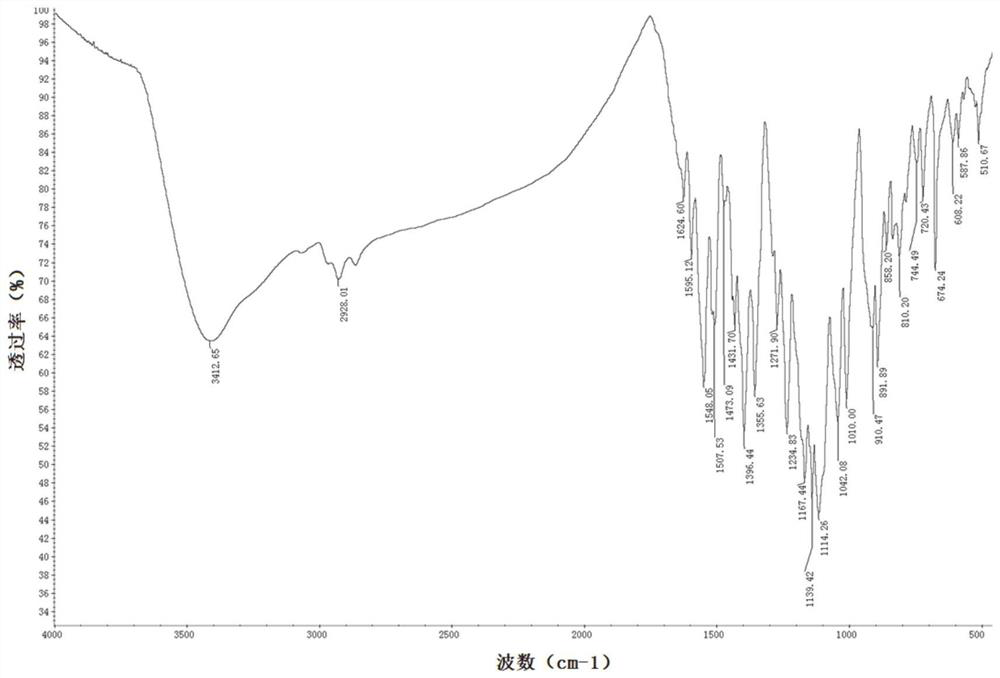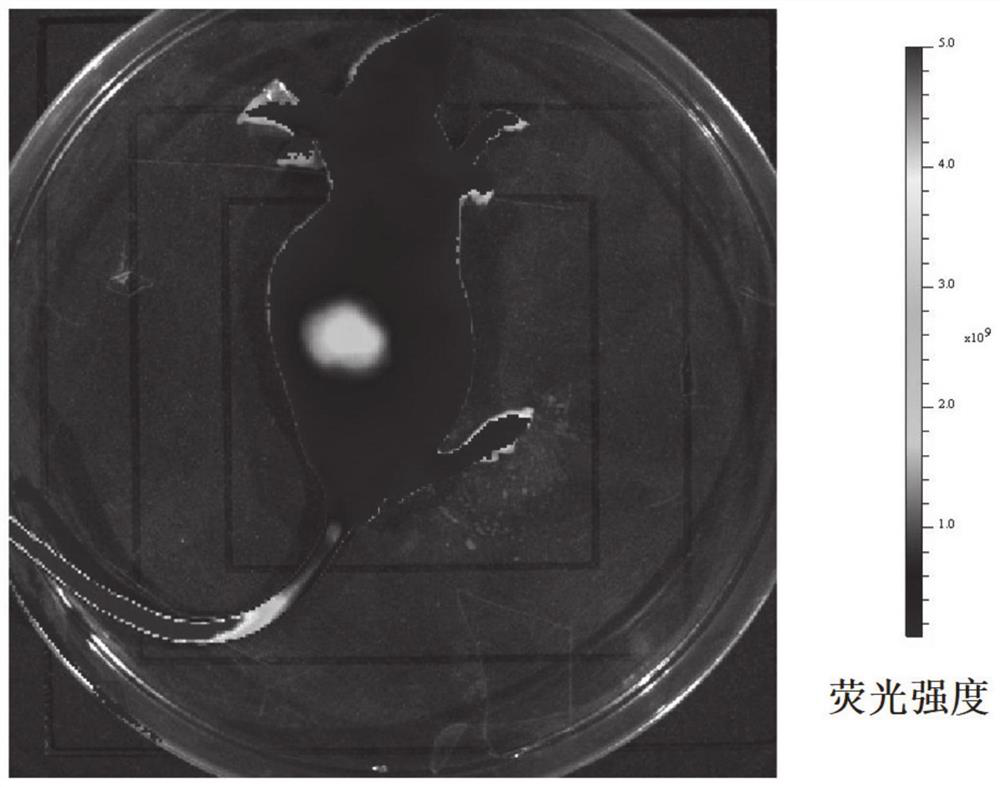Preparation method and application of heptamethine indocyanine dye
A technology for heptamethine indocyanine and indocyanine, which is applied in the field of polymethine indocyanine dyes and their preparation, can solve the problems of high price, high consumption of organic solvents, low purity and the like, and achieves improved preparation efficiency , No need for noble metal catalysis, the effect of large single reaction volume
- Summary
- Abstract
- Description
- Claims
- Application Information
AI Technical Summary
Problems solved by technology
Method used
Image
Examples
preparation example Construction
[0136] As mentioned above, the present application relates to a preparation method of heptamethine indole cyanine dye, comprising the following steps: reacting 2,3,3-trimethylindole derivatives with nucleophilic substitution compounds to obtain organic ammonium salts; The organic ammonium salt and cycloalkene derivatives are mixed in a green organic solvent for reaction, after the reaction, an organic precipitant is added to the product to cool and stand overnight to obtain the heptamethine indole cyanine dye. The method has the advantages of short synthesis route, simple process, no catalyst, high yield, simple purification method, high atom utilization rate and less organic solvent consumption, which greatly improves the preparation efficiency of this type of dye, and can realize low-cost mass production. It is of great significance in the production and application research of heptamethine indole cyanine dyes.
[0137] In addition, according to the preparation method of the...
Embodiment 1
[0144] Example 1 Synthesis of compound 53
[0145] Compound 53 was synthesized according to the following route:
[0146]
[0147] 1) Synthesis of 2,3,3-trimethyl-1-(butane)-indole
[0148] Add 2,3,3-trimethylindole and 4-bromobutane in a molar ratio of 1:1.5 into the reactor, seal it and pump it to 10Pa, heat it to 110°C and stir it for 8 hours, cool it to room temperature and pump it The resulting product was filtered and directly carried out to the next reaction.
[0149] 2) Synthesis and purification of compound 53
[0150] Add 2-chloro-1-formyl-3-hydroxyl in a molar ratio of 1:2.5 to the 2,3,3-trimethyl-1-(butane)-indole obtained in step 1) into the reactor After completely dissolving methylenecyclopentene with methanol, heat it to 75°C for 24 hours under closed conditions and then cool down to room temperature. Put the reaction system in a refrigerator at 4°C and let it stand for 24 hours. filtered, and then vacuum-dried the obtained solid to obtain the product comp...
Embodiment 2
[0152] Example 2 Synthesis of compound 26
[0153] Compound 26 was synthesized according to the following route:
[0154]
[0155] 1) Synthesis of 2,3,3-trimethyl-1-(p-methylbenzoic acid)-indole
[0156] Add 2,3,3-trimethylindole and p-bromomethylbenzoic acid with a molar ratio of 1:1.5 into the reactor, pump it to 10Pa after sealing, heat to 110°C and stir for 12 hours, cool to room temperature The obtained product was suction filtered, and the next step reaction was carried out directly.
[0157] 2) Synthesis and purification of compound 26
[0158] Add 2,3,3-trimethyl-1-(p-methylbenzoic acid)-indole molar ratio of 1:2.5 2-chloro-1-formyl- 3-Hydroxymethylenecyclohexene, after being completely dissolved in methanol, heated to 75°C for 24 hours under closed conditions, then cooled to room temperature, put the reaction system in a refrigerator at 4°C for 24 hours, then added petroleum ether to stand After suction filtration, the obtained solid was vacuum-dried to obtain ...
PUM
 Login to View More
Login to View More Abstract
Description
Claims
Application Information
 Login to View More
Login to View More - Generate Ideas
- Intellectual Property
- Life Sciences
- Materials
- Tech Scout
- Unparalleled Data Quality
- Higher Quality Content
- 60% Fewer Hallucinations
Browse by: Latest US Patents, China's latest patents, Technical Efficacy Thesaurus, Application Domain, Technology Topic, Popular Technical Reports.
© 2025 PatSnap. All rights reserved.Legal|Privacy policy|Modern Slavery Act Transparency Statement|Sitemap|About US| Contact US: help@patsnap.com



